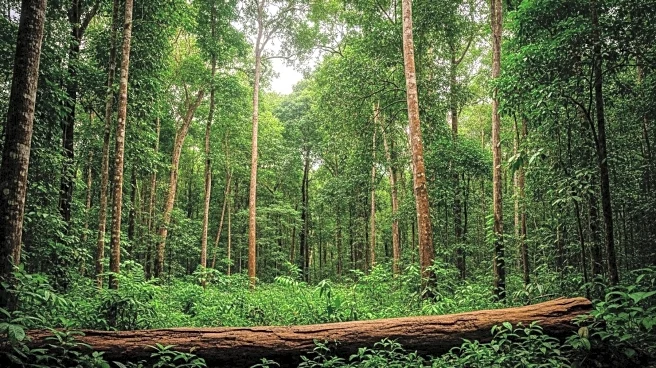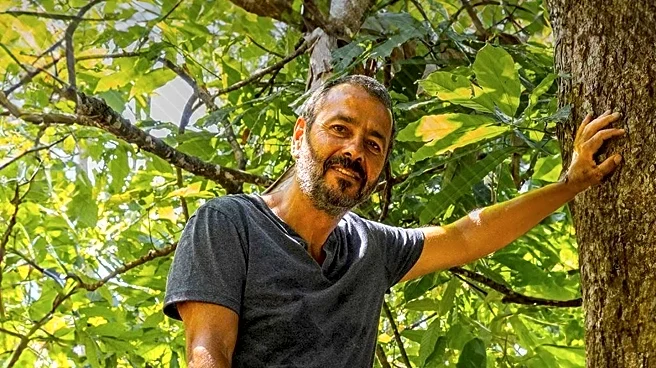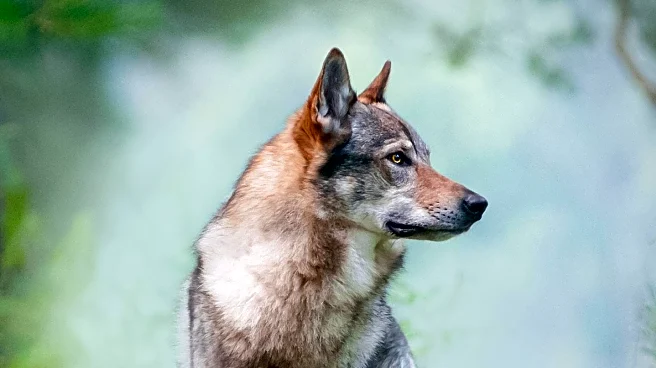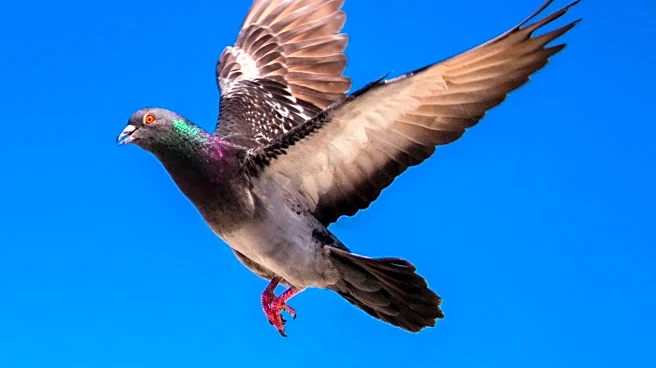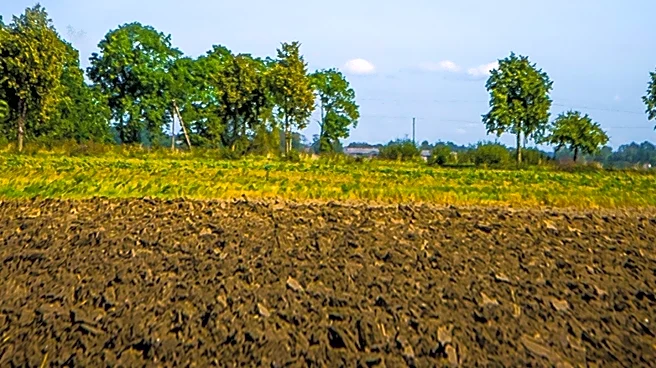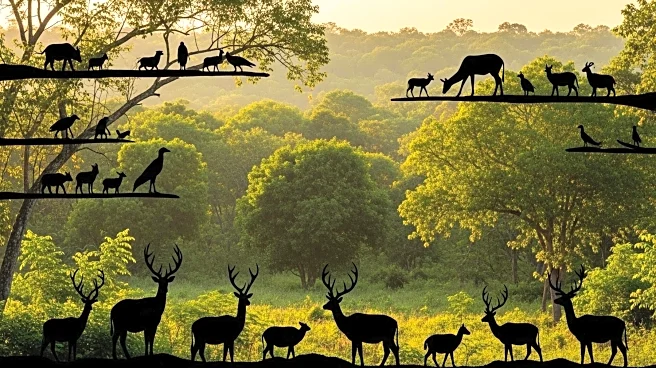What is the story about?
What's Happening?
A new model developed by researchers from King's College London and the Zoological Society of London predicts a significant increase in Scotland's wild boar population over the next 50 years. The model, which considers factors such as birth rates, habitat preferences, and social behaviors, forecasts a rise in boar numbers from 1,472 to 2,399 by 2075. The boar are expected to expand their range by 131 km² annually, avoiding urban areas but increasing in regions like the West Highlands and Dumfries and Galloway. The resurgence of wild boar, once extinct in Britain, poses both ecological benefits and challenges, including disease transmission and crop damage.
Why It's Important?
The projected increase in wild boar populations in Scotland has significant implications for local ecosystems and communities. While boar contribute to ecological processes and can boost tourism and hunting, they also pose risks such as disease spread and agricultural damage. Understanding their population dynamics is crucial for managing these impacts and developing strategies for coexistence. The model provides a tool for policymakers to anticipate changes and plan interventions, such as compensation schemes or targeted culling, to mitigate negative effects while harnessing potential benefits.
What's Next?
Researchers aim to refine the model to account for factors like climate change and socio-economic impacts, including crop damage costs and hunting revenues. The model's limitations, such as assumptions about life history parameters, highlight the need for further data collection. Future versions could provide more comprehensive insights into boar population management, supporting sustainable coexistence with local communities and ecosystems.
AI Generated Content
Do you find this article useful?




